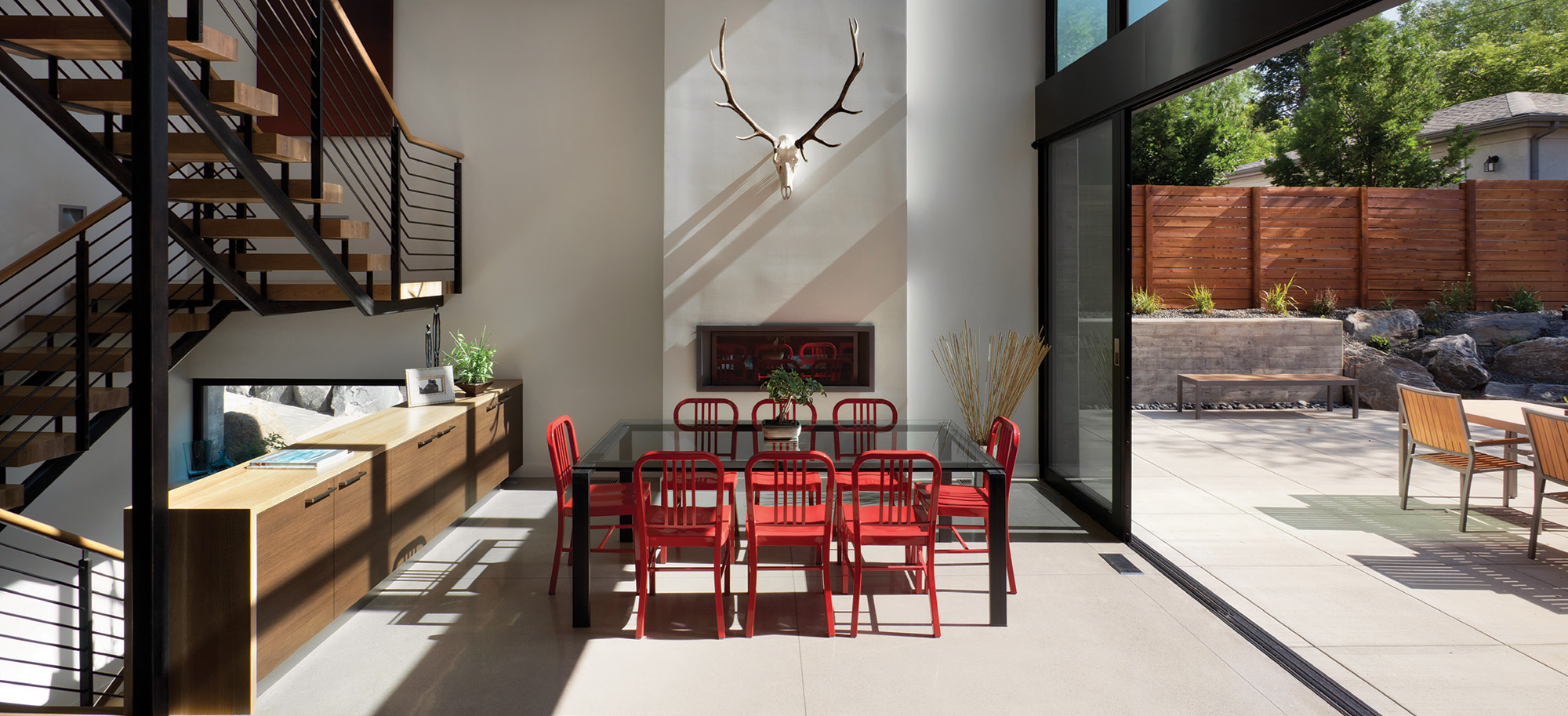
11 Nov Ones to Watch: Ken Andrews
The challenge for Ken Andrews, principal of Arch 11, and his team, was working within the confines of an urban area while still taking advantage of the beautiful mountain vistas. The modern urban home, located in Boulder, Colorado, anchors a downtown corner. An all-glass living room, bound by site-cast board-formed concrete walls, moors the building to the lot, while providing thermal mass to control temperature swings.
“The project was exciting, working with the sensibilities and needs of the owners, both professional cyclists,” Andrews says. “There was a lot of overlap in our thinking, the performance of the cycling world, how they live their lives, and how that was incorporated into the house.”
Working within Boulder’s restrictions, site constraints and performance criteria, Andrews used geometry to effectively site as well as orientate the bulk of the house with the city grid while rotated planes on the interior shift the orientation to the vistas. Andrews calls this project the “Dihedral House,” referring to the mathematical term for an angle formed by two planer faces, a design that allowed him to create a space that offered the best possible outcome. The dihedral lines in this case pertain to the axis of the Flatirons views and how it organizes the interior while the outside box is organized by the grid of the site and the constraints of the property.
“Our charge was to build a durable home that took advantage of the site and performed very well,” he says. “As we rotated the organizational planes of the home’s interior to orient to views of the Flatirons and kept the mass oriented to the street, we discovered that subtle geometry greatly enhanced the interior spaces. If we had just built a rectangular box, we would not have taken advantage of the views as we have, and would not have the synergy with the site that was developed.”
The central stairs at the crux of the dihedral planes mediate the spaces of the living area from the cooking and dining areas. As a core in the middle of the house, they provide a dividing line from the most private spaces on the second floor, to the living areas and the basement in this 4,700-square-foot home. The stairs also create a unique experience moving through the house.
“As you ascend the stairs you experience a framed view of the Flatirons,” Andrews says. “As you slip into the master suite you are afforded a 180-degree view of the Front Range.” The basement is a large play area, home theater and guest suite. “The clients are a young, very active family with modern sensibilities. We wanted to emulate the high-tech quality of their bikes and lifestyle with quality materials that were low maintenance. We put a lot of effort into maintaining budgets while still developing a high-performance house.”
Aside from the house, the detached garage has two levels, one for the car and one for the bicycles. “Drive the car in at street level,” Andrews says. “But on the outside of the building there’s a separate secure entrance for bikes and storage. There is a bike washing station at the top of the stairs and a utility bathroom. From the lower garage, the owners can directly enter the house.”
Andrews says that it is his practice’s philosophy that architecture should be designed for the place as well as for our times.
“We’re quintessential Modernists. We take a lot of effort to research our site to understand the physical, experiential and phenomenal aspects of place. We use all that to inform how we approach the formation of a building.”
He also stresses how important it is to take in all the tiny details of a client’s lifestyle and habits. “Our primary goal with clients is to understand how they live, and develop a home around them and their place,” Andrews says. “It is the foundation of how we shape a house on the site — views, light, placement of rooms — those are constraints we take seriously. We seriously consider what the client wants and what the site can provide.”
- Ken Andrews
- The all-glass living room enables gorgeous mountain views as well as thermal control. Photos: Raul Garcia/Astula








No Comments